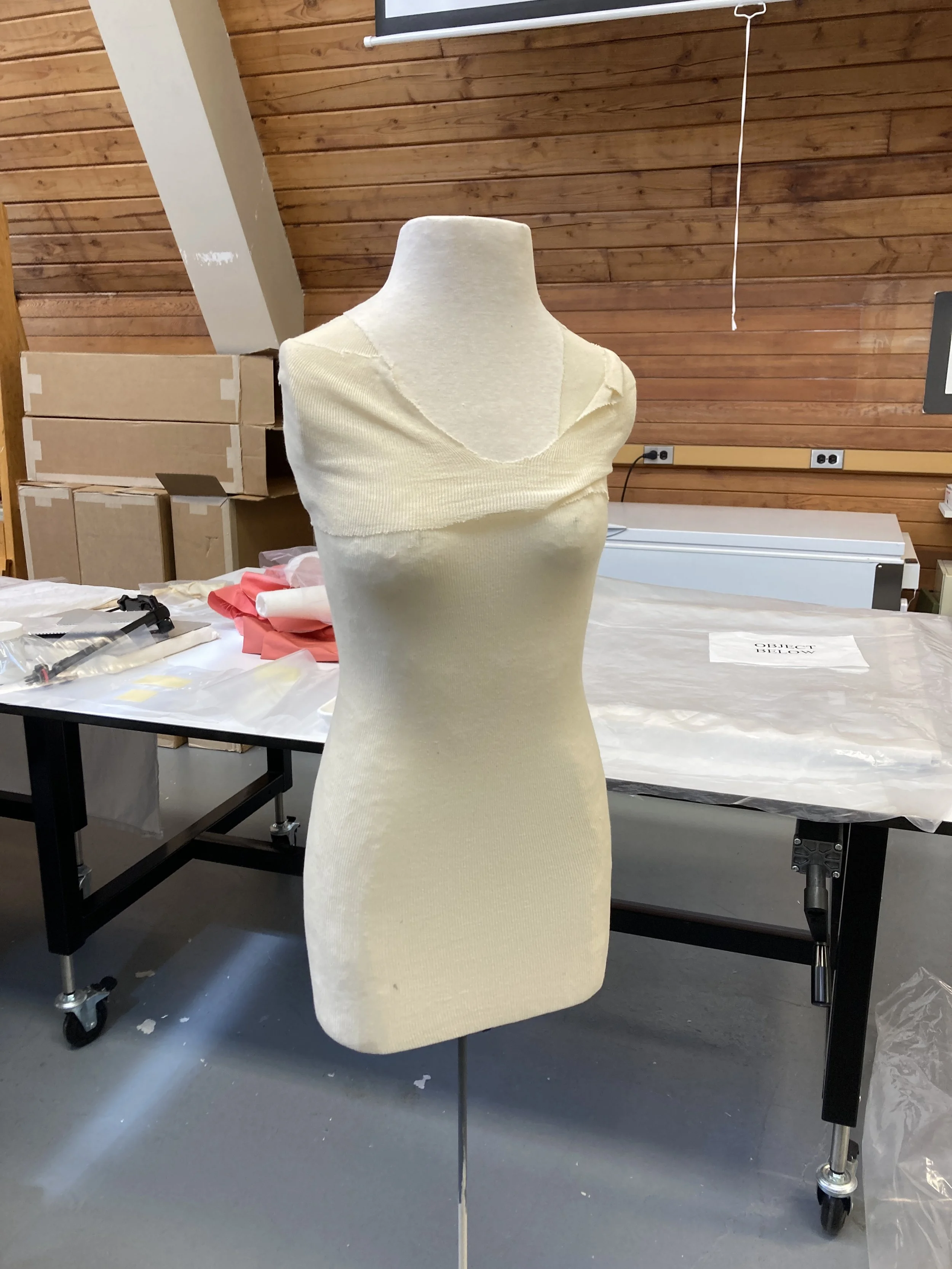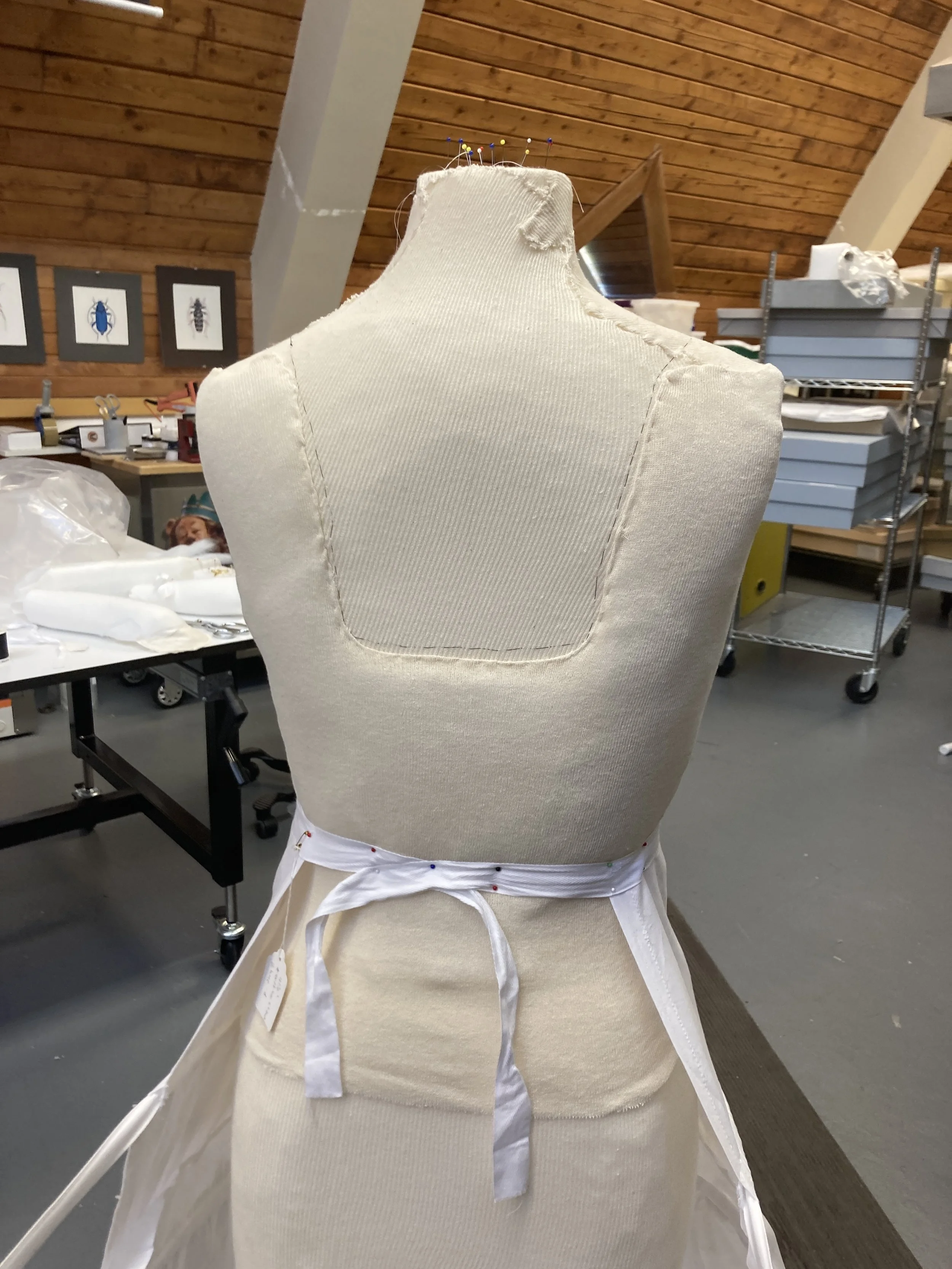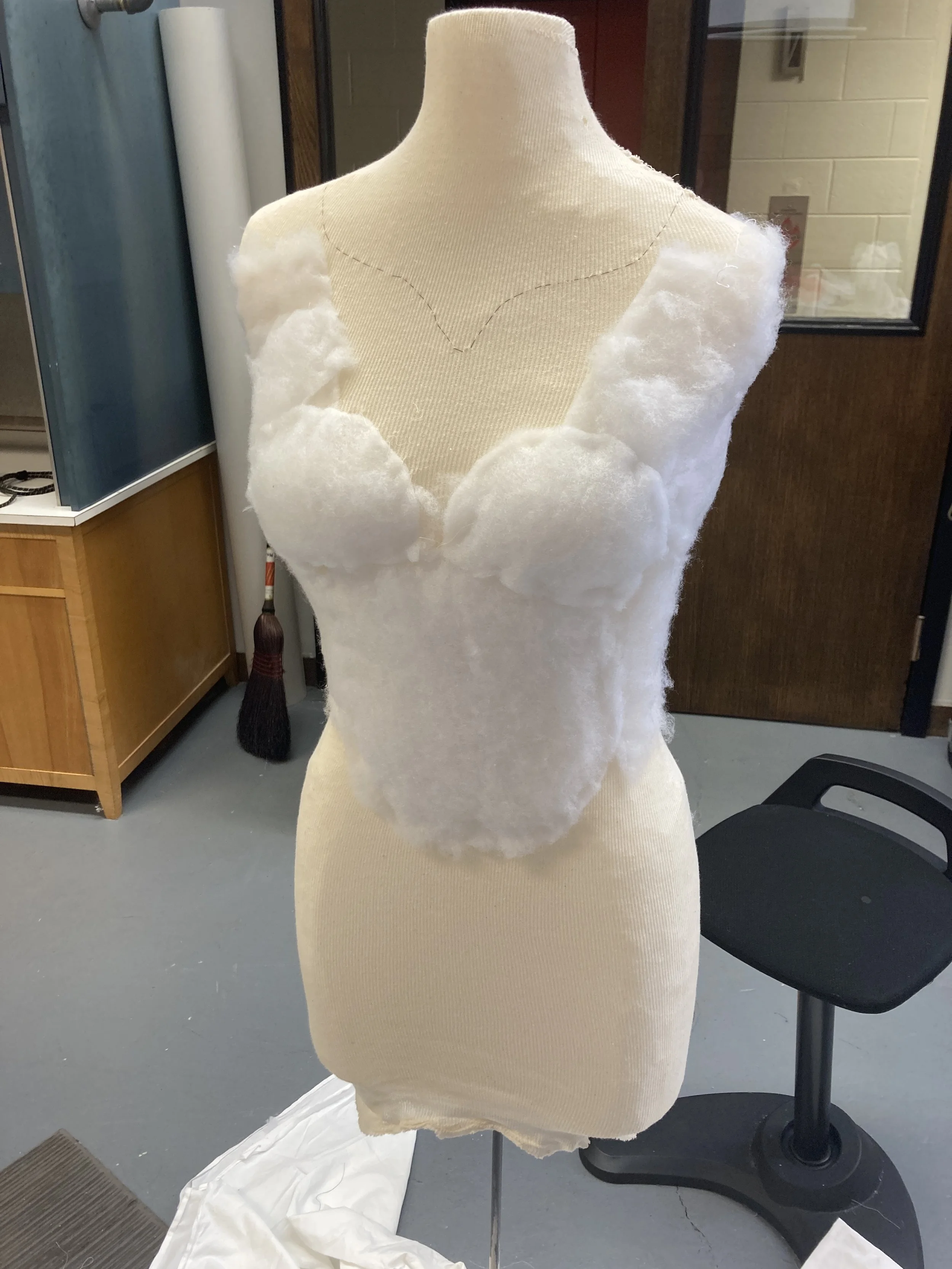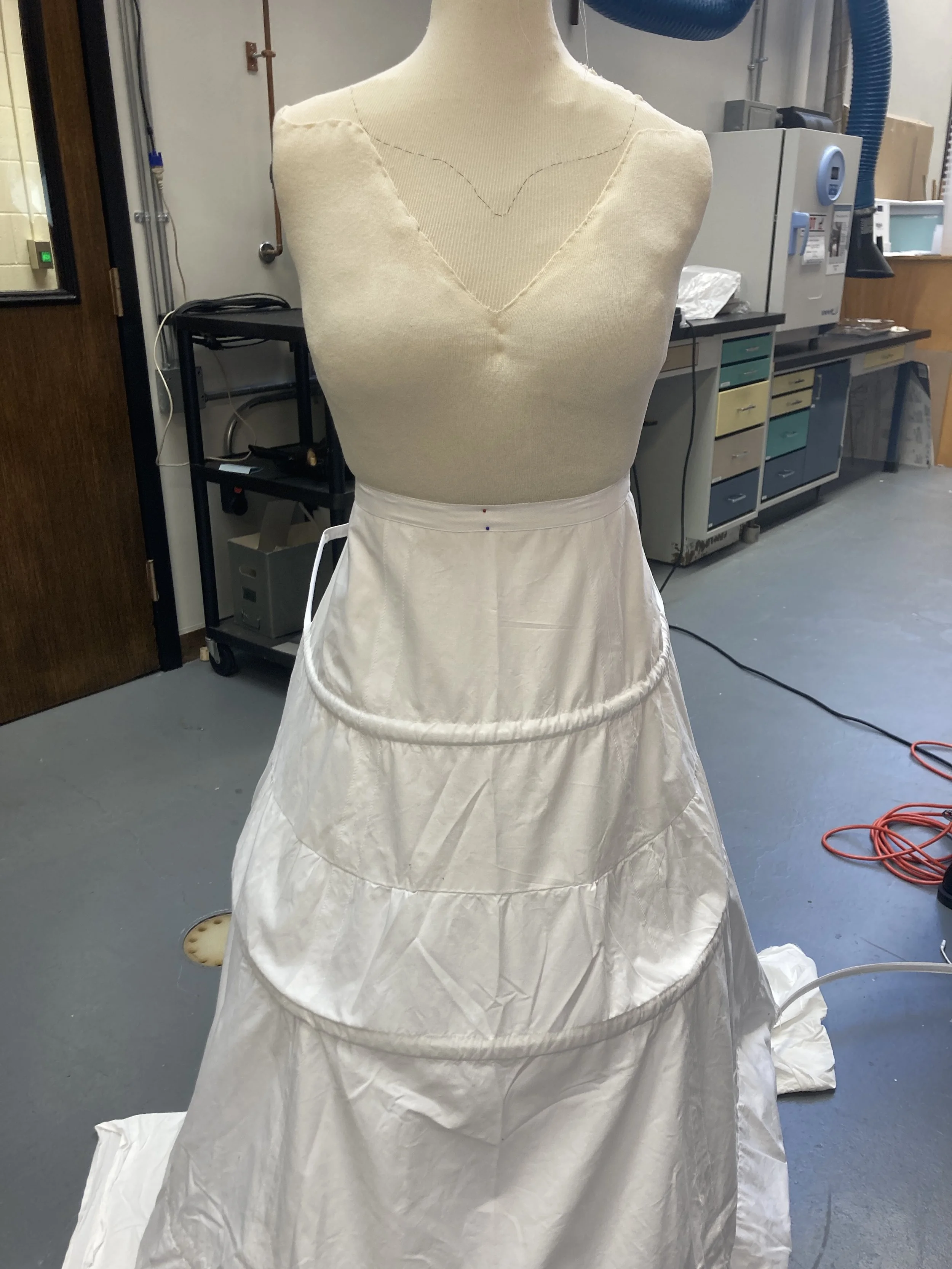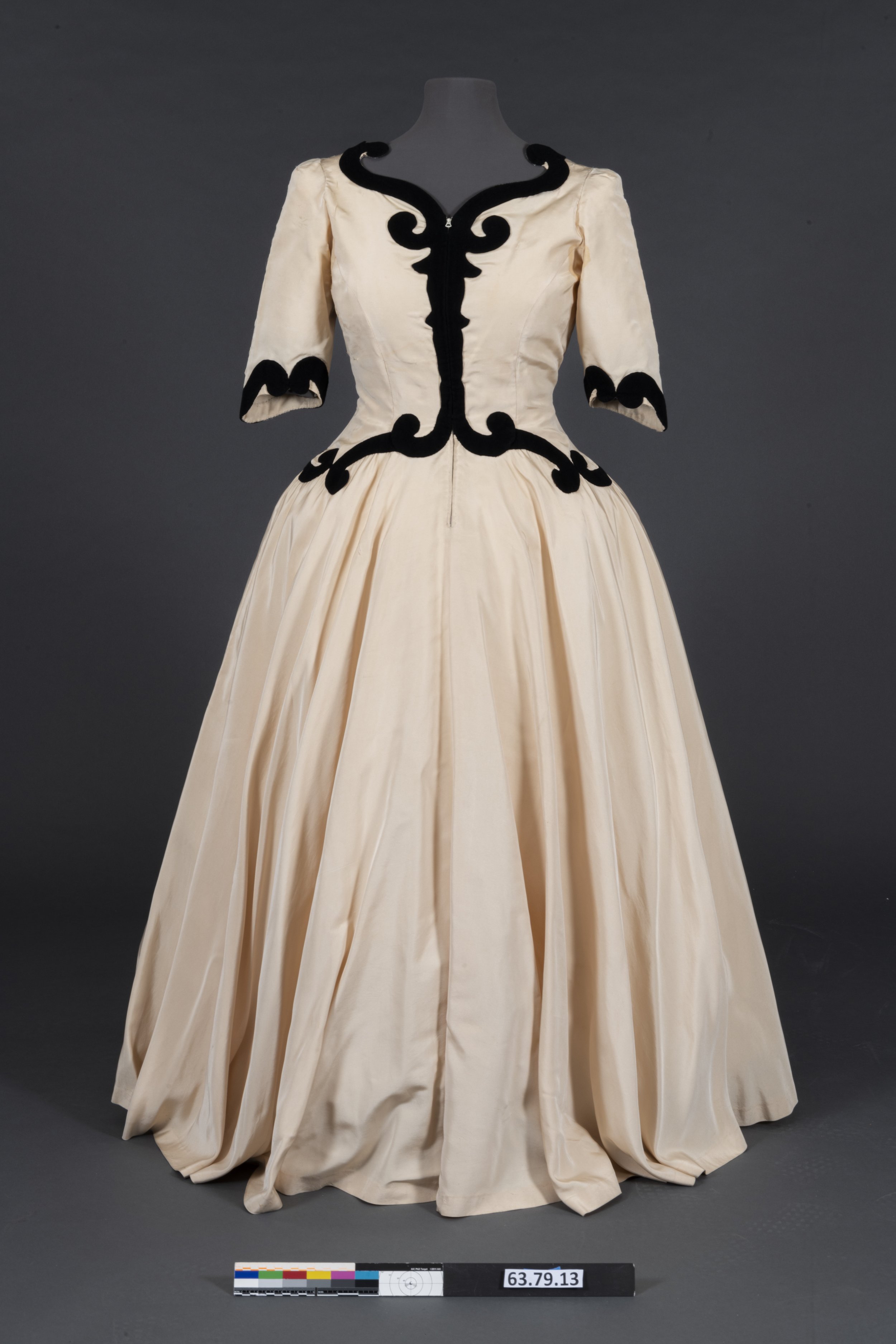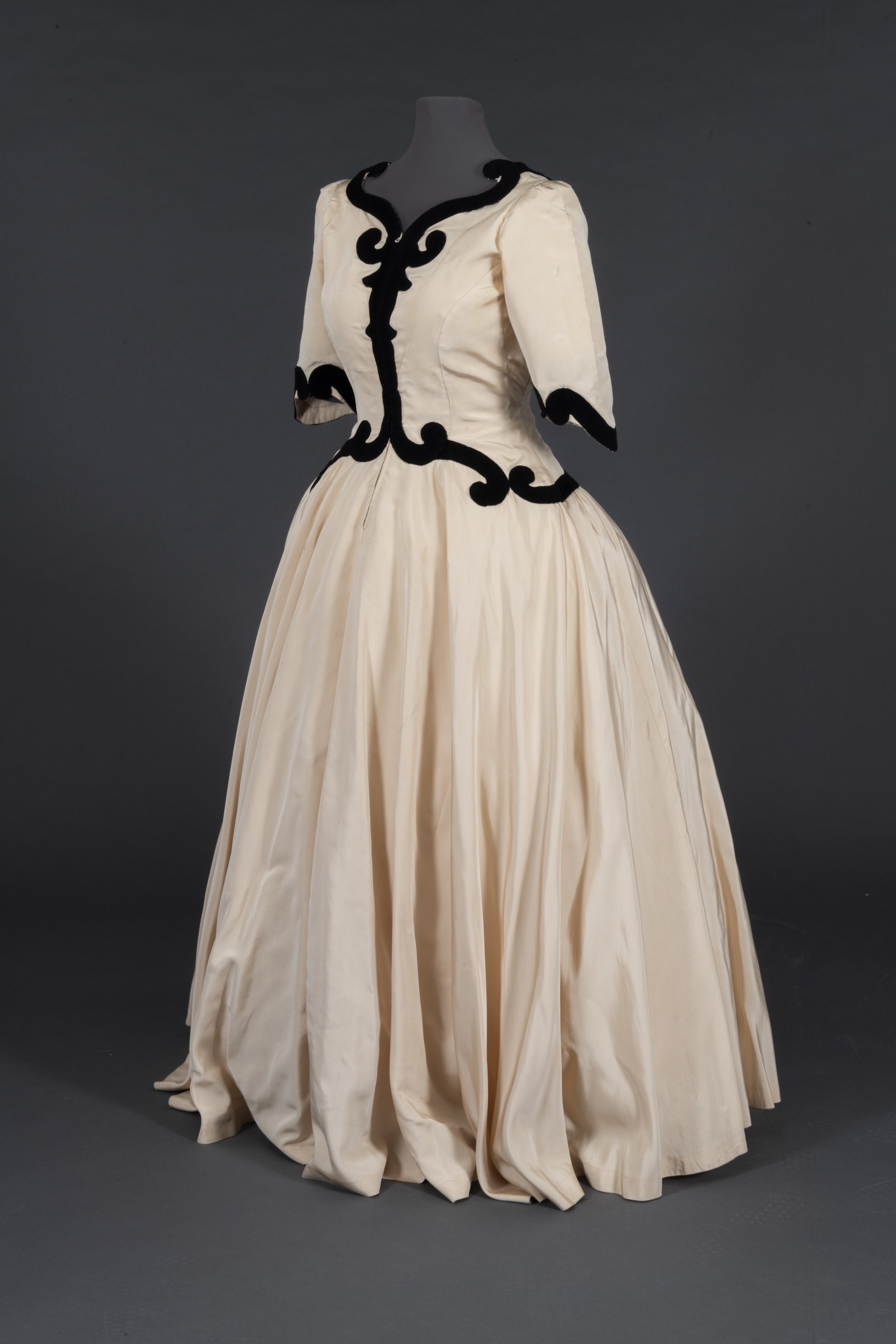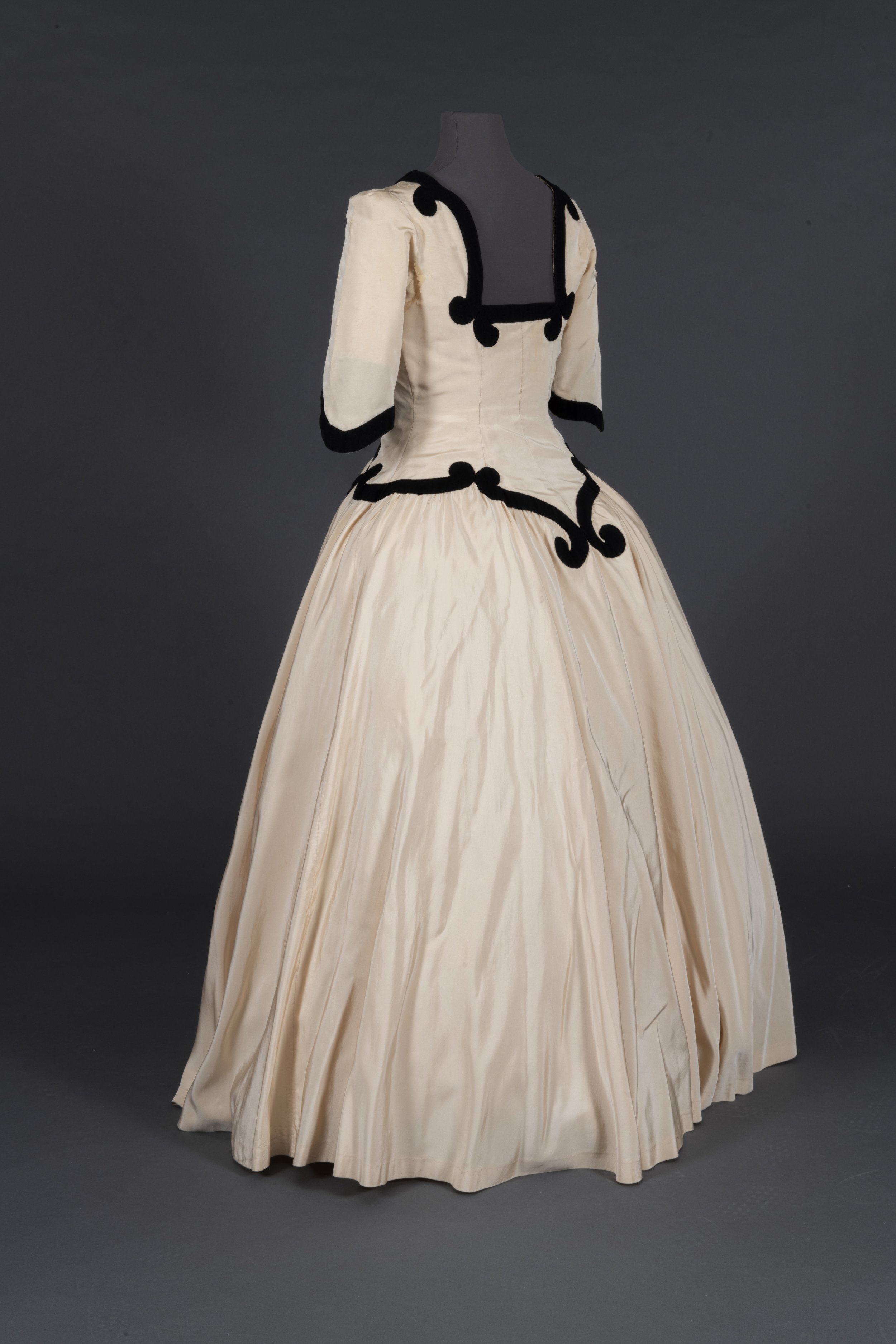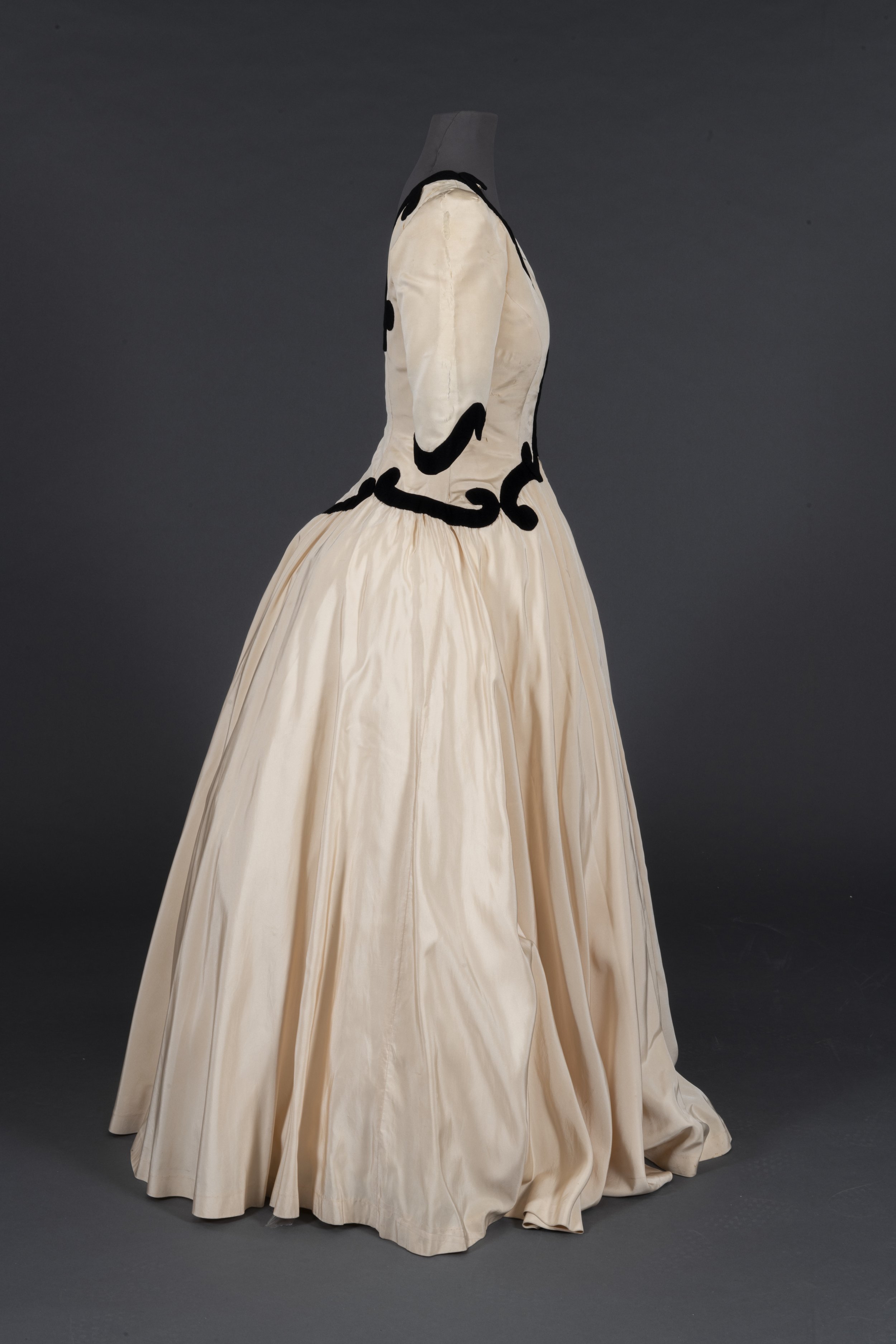
1939 Balenciaga Infanta Gown
Infanta, Cristobal Balenciaga, 1939, silk, cotton, Drexel Fox Collection, 63.79.13 a, b; ACP 1851 a, b
This dress expresses Balenciaga’s deep connection and reverence for his home country of Spain. The gown was inspired by Velazquez paintings, particularly the figure of Infanta Margaret Theresa. The gown needed stabilization of breaks in the silk and reduction of the body soiling stains throughout the bodice.
This particular gown has several condition issues including heavy body soiling and many tears throughout the silk faille due to weighted wefts.
Armpit staining before, during, and after treatment.
After documentation, the first step of the treatment was to decrease the visual impact and acidification of the underarm staining.
The process included and suction plate, a cyclododecane barrier, 5% agarose gel soaked in 1% acetic acid solution, and distilled water for rinsing. The full process is detailed in the report above.
This process successfully reduced the visual impact of the stains and allowed the silk to regain some flexibility.
Gel Cleaning Time Lapse
Silk Crepeline Adhesive Lining
The next big step was to line the accessible areas of the bodice with a 12% 1:1 Lascaux 498/360 coated crepeline. The dress was first patterned (see below), the crepeline was cut roughly to shape, then stuck, trimmed, and adhered with custom cut Gortex and acetone soaked blotter.
The Pattern
The bodice was patterned for three purposes. First, to aid with the cutting and placing of the crepeline lining. Second, to create a mock-up for testing adhesive techniques and as a fitting stunt double, and third, to accompany the documentation for future researchers.
Please note that this is a first draft pattern and is not perfected.
On a Mannequin
An ethafoam mannequin was refitted with carving, padding, and a hoop skirt to create a custom form for final photography.
